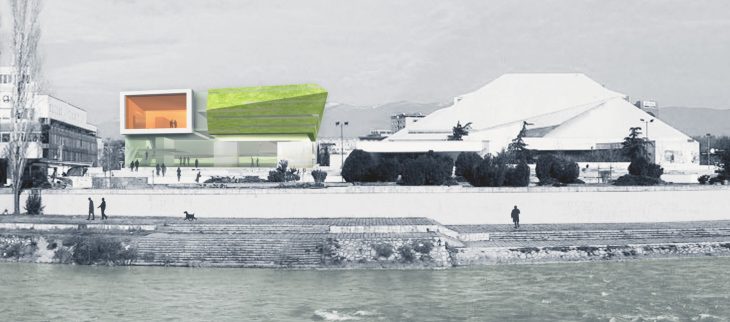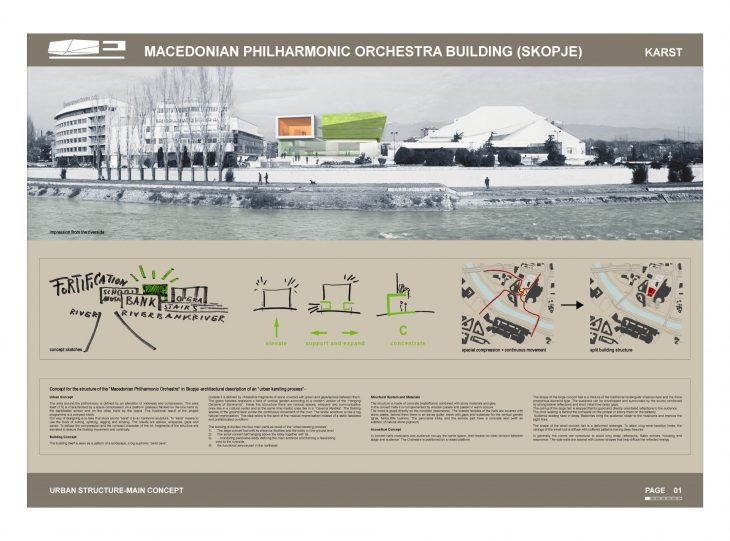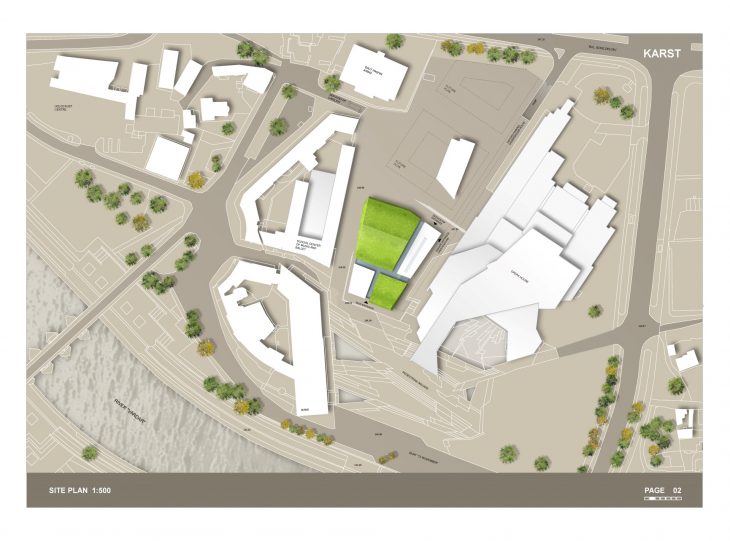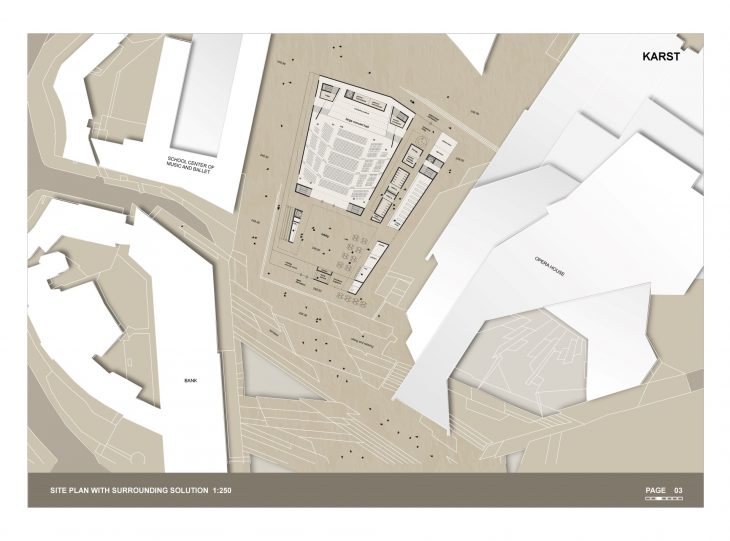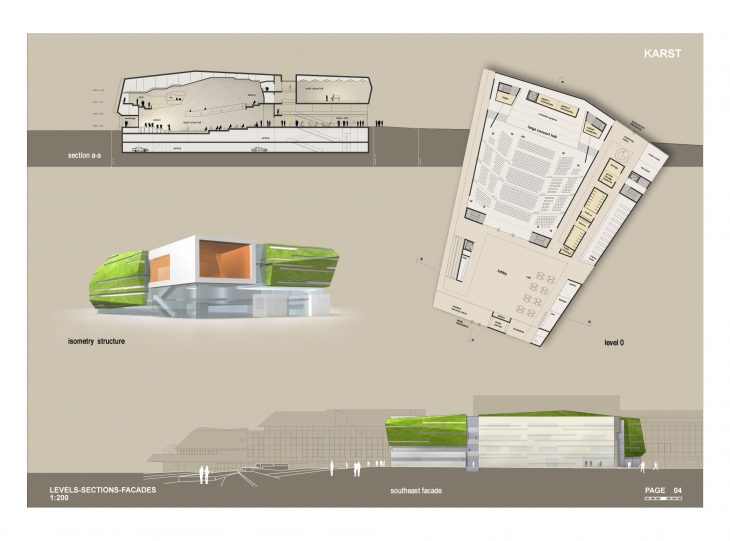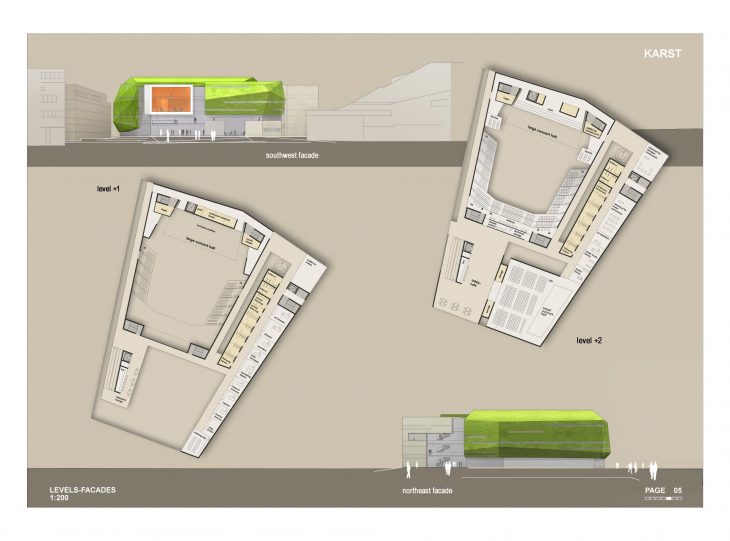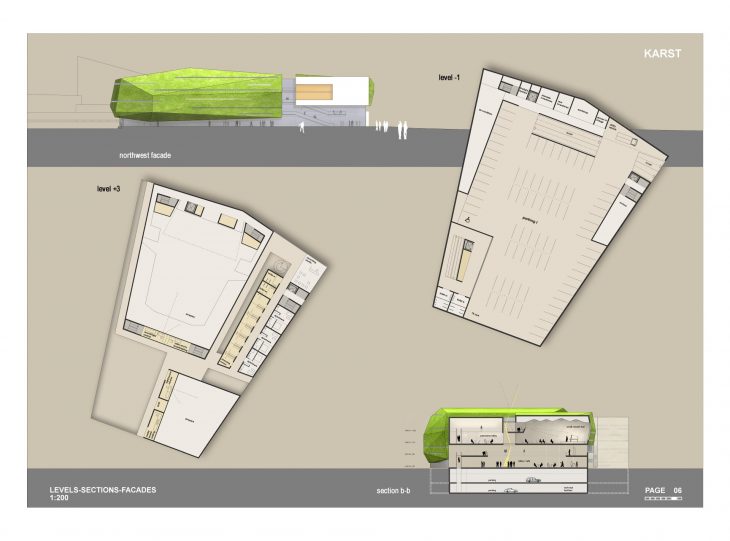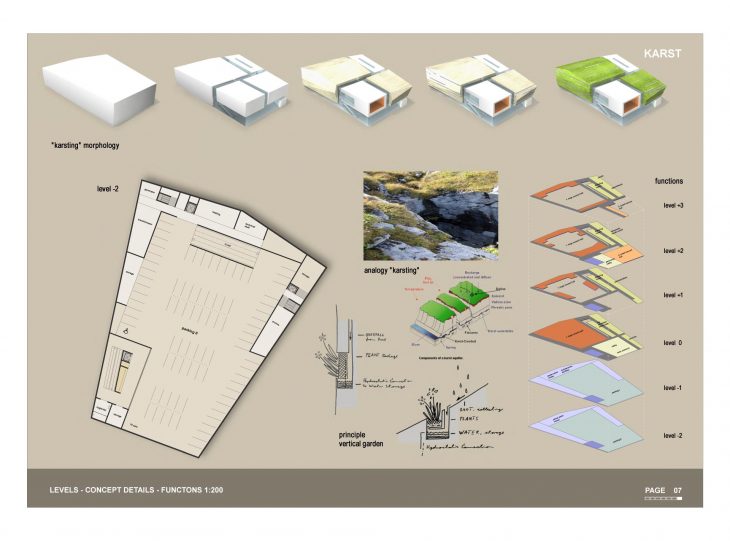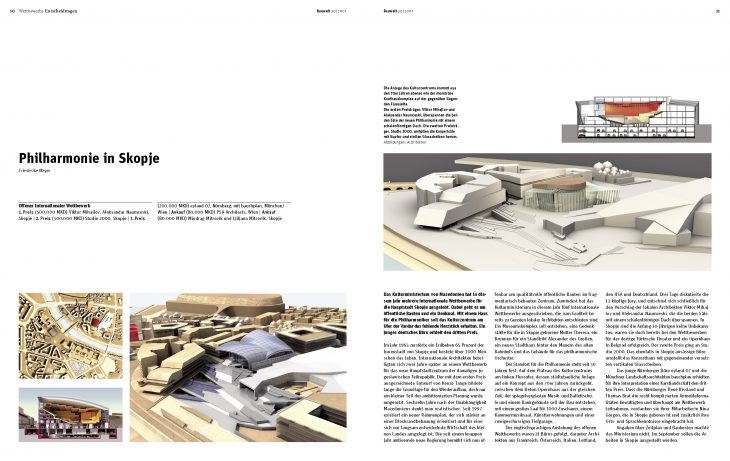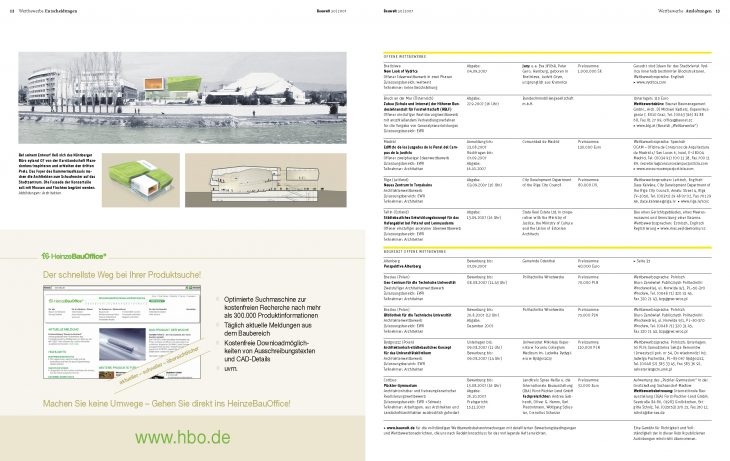Philharmonie
- Beschreibung:
- Offener internationaler Architektenwettbewerb 2007 - 3. Preis, zusammen mit bauchplan ).( Landschaftsarchitekten, Neubau der Philharmonie in Skopje
- Bauherr:
- Kulturministerium Mazedonien
- Standort:
- Skopje, Mazedonien
- Zeitraum:
- 3. Preis - 2007
Bauwelt 30/2007, Philharmonie in Skopje
Urban Concept
The area around the philharmony is defined by an alteration of wideness and compression. The area itself is characterized by a space compression on a platform (plateau) flanked on the one hand by the bank/ballet school and on the other hand by the opera. The functional result of the project programme is a compact block. Our way of designing is to take that block and to “karst” it to an harmonic sculpture. To “karst” means to use the tools of cutting, splitting, digging and eroding. The results are splices, airspaces, gaps and caves. To defuse the compression and the compact character of the lot, fragments of the structure are elevated to assure the floating movement and continuity.
Building Concept
The building itself is seen as a pattern of a landscape, a big euphonic “carst cave”. Outside it is defined by christalline fragments of stone covered with green and gaps/splices between them. The green facades represent a kind of vertical garden according to a modern version of the “Hanging Gardens of Semiramis”. Inside this sturucture there are various spaces, eloquent and communicative ones like in a cultural center and at the same time mystic ones like in a “Caverna Mystika”. The floating spaces of the ground-level evoke the continuous movement of the river. The whole sculpture is like a big natural improvisation. This idea refers to the spirit of the musical improvisation instead of a static idealized and prefabricated condition.
The building is divided into four main parts as result of the “urban karsting process”:
1) The large concert hall with its entrance facilities and the lobby on the ground level
2) The small concert hall hanging above the lobby together with its…
3) …monitoring panorama-lobby defining the main entrance and framing a fascinating view to the riverside
4) the functional service-part in the northeast
Structural System and Materials
The structure is made of concrete (walls/floors) combined with stony materials and glas. In the concert halls it is complemented by wooden panels and plaster in warm colours. The wood is glued directly on the concrete (resonance). The outside facades of the halls are covered with stone plates, behind them there is an eaves gutter mesh with gaps and substrate for the vertical garden (gras, herbs, little bushes). The panorama lobby and the service part have a concrete skin (with an addition of natural stone pigment).
Acoustical Concept
In concert halls musicians and audience occupy the same space, that means no clear division betweenstage and audience. The Orchestra is positioned on a raised platform. The shape of the large concert hall is a mixture of the traditional rectangular shoebox-type and the more amorphous diamond type. The audience can be enveloped and surrounded by the sound, reinforcedby strong lateral reflections and short initial time delay gaps. The ceiling of the large hall is stepped flat for good and directly orientated reflections to the audience. The choir seating is behind the orchestra on the podest or above them on the balkony. Audience seating rises in steps. Balconies bring the audience closer to the musicians and improve the sight lines. The shape of the small concert hall is a deformed rectangle. To attain long reverberation times, the ceilings of the small hall is diffuse with coffered patterns having deep fissures. Generally the rooms are conceived to avoid long delay reflections, flutter echoes, focusing and resonance. The side walls are adored with convex shapes that help diffuse the reflected energy.

